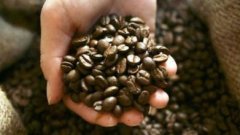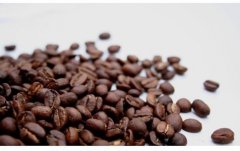A brief introduction to the planting situation, geographical location, climate and altitude of fine coffee beans in BOU, Spain

Spain has a variety of cafes, different styles, but the common feature is very lively, always full of locals and tourists, in Spain you will be surprised to find that people seem to have too much leisure time in the cafe. In fact, Spanish cafes and bars use the same name, and if you see a place with a "Bar" sign, you can go in and have a good cup of coffee.
Spanish cafés are places where every second is alive, the waiters are loud, almost shouting, the cash register crackles, locals and tourists talk loudly, mixed with Spanish hyperbole, but no matter how much they talk, people don't forget to sip coffee from their cups every now and then
Café has become the best place for Spanish friends to meet and communicate. The reporter last time about a friend in the neighborhood of the cafe to meet, but also saw a rather touching scene. Seven or eight mentally handicapped people came here to drink coffee under the care of their guardians. They each had a cup of coffee and a snack, talked and laughed, and chatted happily.
The Spanish Government has set up service centres in the community for persons who are unable to live independently, so that they can have a basic livelihood. Surprisingly, the center thought of taking people with intellectual disabilities out for coffee so they could enjoy life like normal people. This cup of coffee in the thick friendship and care, is the real, never volatile coffee soul
In Spain, drinking coffee has become almost a mantra. "Let's go have a cup of coffee." It means we can talk and maybe not have coffee after we meet, maybe just a drink or something.
Café has a richer and broader meaning in Spain. The oldest university in the country, the University of Salamanca, has a history of about 900 years. Miguel de Unamuno, a Spanish writer and philosopher who was president of the university three times, once said that Spain's true university is in cafes and city squares. Spaniards like to kill time in cafes and bars. Coffee has become an integral part of their lives. Here you can feel the soul of Spanish coffee.
Four out of five Spaniards drink coffee every day, according to a survey by Spain's Coffee and Health Information Centre. At home or in a cafe. Cafes can also be found everywhere. A cup of coffee costs about 1 euro. It is reported that there are about 200,000 cafes or bars in the country, that is, an average of more than 230 people have a cafe. The gloom of the economic crisis has not had much effect on the number of cafes, which is less than 1% lower than before the crisis
No one counts how much coffee a Spaniard drinks each day, but Spanish cafes are always open from morning to night, and there is no empty time all day. People love to drink coffee in cafes, many of which don't have that many seats. People stand at high tables, drink a cup of hot coffee with gold foam, and then start talking to people around them.
In Spain you will never be blamed for drinking coffee. Spaniards deeply understand the role and influence of coffee on life. It is through coffee that they can taste the joy of life. If you come to Spain, it feels like life has turned a new page, you have so much to see, there are so many world heritage sites waiting for you, such as the Sagrada Familia and the Quail Park, but anyway, the first thing to do in the morning is to have a cup of coffee.
Important Notice :
前街咖啡 FrontStreet Coffee has moved to new addredd:
FrontStreet Coffee Address: 315,Donghua East Road,GuangZhou
Tel:020 38364473
- Prev

A brief introduction to the treatment method of grinding degree and baking degree of El Qomolangma boutique coffee beans
A brief History of Coffee production in 1742, coffee was introduced to El Salvador from the Caribbean (1740). In the mid-19th century, El Salvador's original export pillar Indigo (one of the dyes) received a gradual decline in the development of synthetic dyes in Europe, and coffee gradually became the main export product under the guidance of the government. In 1856, the first 693 bags of coffee beans were shipped to Europe. all long
- Next

Deep and mysterious description of flavor and aroma characteristics of boutique coffee beans in Agua Durse, Guatemala, Jane
And it has a stronger flavor, richer taste and stronger tobacco flavor than other Guatemalan coffee. Every 30 years or so, the area near Antigua is hit by a volcanic eruption, which provides more nitrogen to the already rich land, and plenty of rainfall and sunlight make the place more suitable for growing coffee. The coffee belt is distributed over 1500 meters and latitudes 14 to 10 north.
Related
- Detailed explanation of Jadeite planting Land in Panamanian Jadeite Manor introduction to the grading system of Jadeite competitive bidding, Red bid, Green bid and Rose Summer
- Story of Coffee planting in Brenka region of Costa Rica Stonehenge Manor anaerobic heavy honey treatment of flavor mouth
- What's on the barrel of Blue Mountain Coffee beans?
- Can American coffee also pull flowers? How to use hot American style to pull out a good-looking pattern?
- Can you make a cold extract with coffee beans? What is the right proportion for cold-extracted coffee formula?
- Indonesian PWN Gold Mandrine Coffee Origin Features Flavor How to Chong? Mandolin coffee is American.
- A brief introduction to the flavor characteristics of Brazilian yellow bourbon coffee beans
- What is the effect of different water quality on the flavor of cold-extracted coffee? What kind of water is best for brewing coffee?
- Why do you think of Rose Summer whenever you mention Panamanian coffee?
- Introduction to the characteristics of authentic blue mountain coffee bean producing areas? What is the CIB Coffee Authority in Jamaica?

